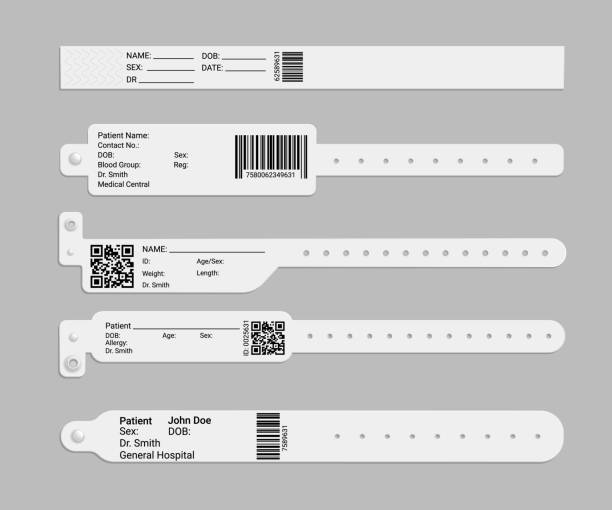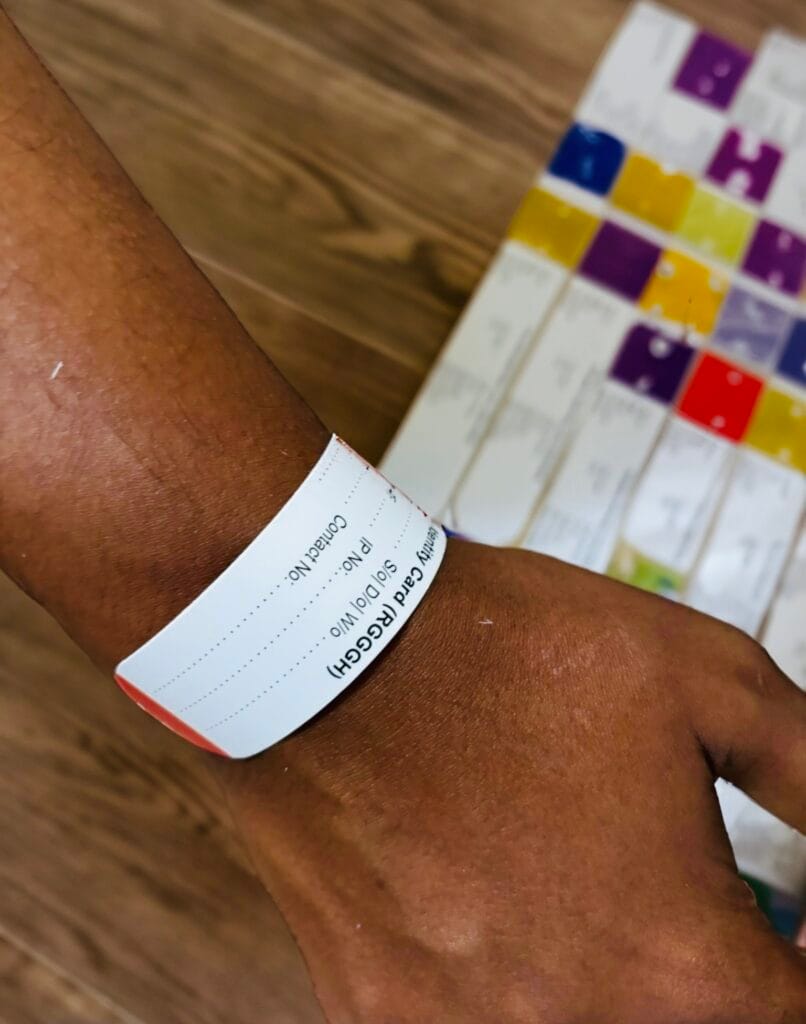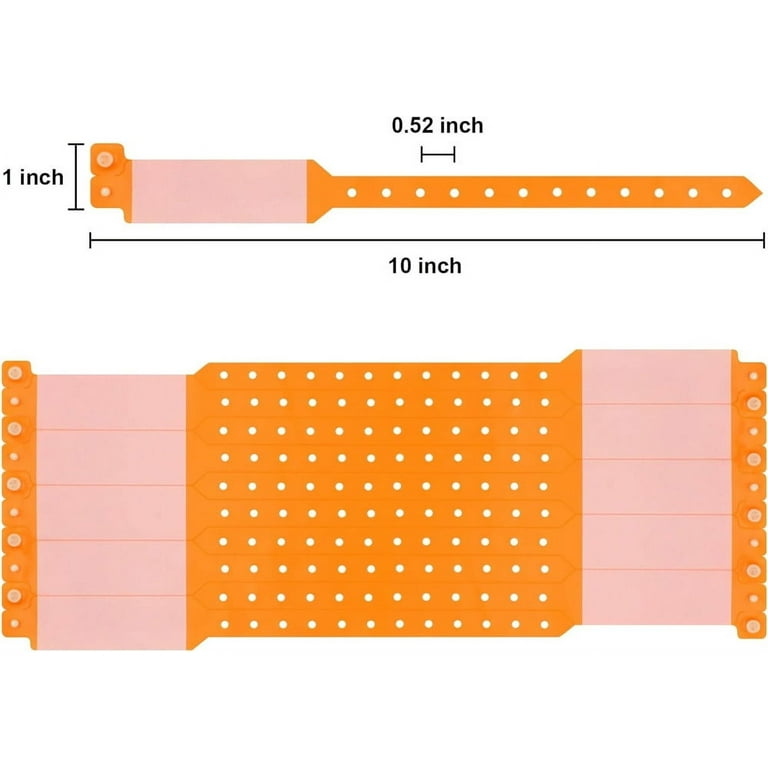Enhancing Safety: The Value of Patient Identification Bands in Medical Care
In the world of health care, the effectiveness of client identification bands can not be overemphasized, as they offer as an essential protect against misidentification and succeeding mistakes. As we check out the complex function of these bands, it becomes apparent that their importance expands beyond mere recognition, increasing questions concerning finest practices and future advancements in client safety and security.
Summary of Patient Recognition Bands
Client identification bands play a critical function in making certain the security and accuracy of person care in health care setups. These bands, generally worn on the wrist or ankle joint, act as an important device for confirming patient identification, thus lessening the danger of mistakes in treatment, medicine administration, and other health care treatments. Made from resilient products, patient identification bands usually consist of important information such as the patient's name, date of birth, clinical record number, and barcodes or QR codes for scanning.
The execution of client identification bands is essential in various medical care environments, including health centers, outpatient centers, and long-term care organizations. They add to a methodical approach in patient monitoring, allowing healthcare experts to quickly and precisely recognize people, specifically in high-pressure situations where quick decision-making is necessary.
Furthermore, making use of these bands is straightened with regulatory standards targeted at enhancing patient safety - Patient Identification Band. By guaranteeing that each patient's information is readily obtainable and conveniently verifiable, medical care service providers can keep a high criterion of treatment, decrease the occurrence of unfavorable events, and cultivate a culture of security within medical care establishments
Advantages of Accurate Recognition
Accurate recognition is basic to improving individual security and care high quality in healthcare setups. It serves as the first line of protection against errors that could lead to adverse client outcomes. By making certain that each client is properly identified via trusted methods, such as individual identification bands, doctor can dramatically lessen the risk of misidentification, which can bring about improper therapies, drug mistakes, and even medical mix-ups.
Additionally, exact individual recognition promotes efficient interaction among medical care teams. When all employee can continually identify individuals, they can share critical info more successfully, bring about better control of care. This is specifically crucial in emergency situation scenarios where prompt treatments are important.
In addition, exact identification sustains conformity with regulatory standards, thus reducing the danger of legal repercussions for health care centers. It cultivates trust in between patients and health care service providers, as people feel extra secure understanding that their identifications are being secured.

Common Difficulties Encountered
Making sure efficient individual identification in health care settings presents an array of obstacles that can jeopardize safety and security and care quality. Clients may arrive in a state of complication or distress, making exact recognition challenging.
Another obstacle is the reliance on human consider recognition treatments. Health care experts may accidentally forget or misunderstand identification methods, especially in high-stress atmospheres such as emergency divisions. This can cause errors, consisting of the administration of incorrect therapies or medications.
Technological problems likewise present challenges. Although electronic wellness document (EHR) systems are designed to improve individual recognition, system blackouts or customer errors can disrupt the procedure. In addition, the physical design of patient ID bands can result in readability problems, particularly in instances where bands are harmed or covered.
Lastly, inconsistent training amongst team concerning recognition protocols can result in voids in expertise and practice. Dealing with these difficulties is critical for boosting person safety and security and ensuring that recognition bands serve their desired objective properly.
Best Practices for Application
To properly carry out patient recognition bands in medical care this post setups, organizations need to embrace a diverse method that prioritizes training, innovation, and standardization combination. Standardization entails developing clear procedures for the style, application, and use recognition bands across all departments. This guarantees uniformity and minimizes the risk redirected here of errors connected to differences in band types or identifying approaches.


Training is vital for all healthcare team to guarantee they recognize the relevance of exact person recognition, how to effectively read and apply recognition bands, and the procedures to follow in case of inconsistencies. Normal workshops and correspondence course can reinforce this understanding and promote a society of security.
Innovation integration plays a critical duty in enhancing the performance of client recognition bands. Making use of barcode scanning or RFID innovation can streamline the identification procedure, enabling real-time confirmation of individual identities. Furthermore, digital health document systems need to be set up to consist of alerts for inequalities in between the identification band and patient information.
Future Trends in Person Safety
As health care remains to evolve, the emphasis on client safety is most likely to magnify, driven by innovations in modern technology and a higher understanding of systemic threats. Emerging patterns suggest a change towards more incorporated systems that utilize information analytics, fabricated knowledge, and artificial intelligence to enhance client recognition procedures. These technologies can assist determine possible security concerns before they intensify, consequently reducing errors connected with misidentification.
Furthermore, the execution of blockchain innovation might transform just how patient data is safely shared amongst doctor, making sure that recognition bands are updated and constantly precise. This will not only boost person security yet also help with seamless interaction across multidisciplinary teams.

Additionally, the growing emphasis on individualized medicine is anticipated to influence individual safety procedures. By including hereditary and market details into recognition systems, healthcare experts can tailor therapies a lot more successfully, lessening the dangers of adverse responses because of misidentification.
Conclusion
To conclude, individual identification bands work as a crucial component in improving safety within medical care atmospheres. By facilitating precise person recognition, these bands considerably reduce the danger of errors connected with misidentification, unsuitable therapies, and drug administration. Regardless of challenges in application, adherence to ideal practices and the integration of arising technologies can additionally improve their effectiveness. Eventually, the ongoing focus on robust identification procedures will certainly add to improved client end results and general safety and security in healthcare setups.
In the world of healthcare, the efficacy of patient recognition bands can not be overemphasized, as they serve as a fundamental protect against misidentification and subsequent errors.Client identification bands play a critical function in making sure the safety and security and precision of individual treatment in medical care setups. Made from sturdy products, person recognition bands commonly consist of crucial details such as the patient's name, date of birth, medical record number, and barcodes or QR codes for scanning.
By ensuring that each client is appropriately recognized read what he said through trusted means, such as client identification bands, medical care suppliers can substantially lessen the danger of misidentification, which can lead to unsuitable therapies, medicine mistakes, and even medical mix-ups.
In verdict, individual identification bands offer as an important element in boosting safety within medical care environments. Patient Identification Band.